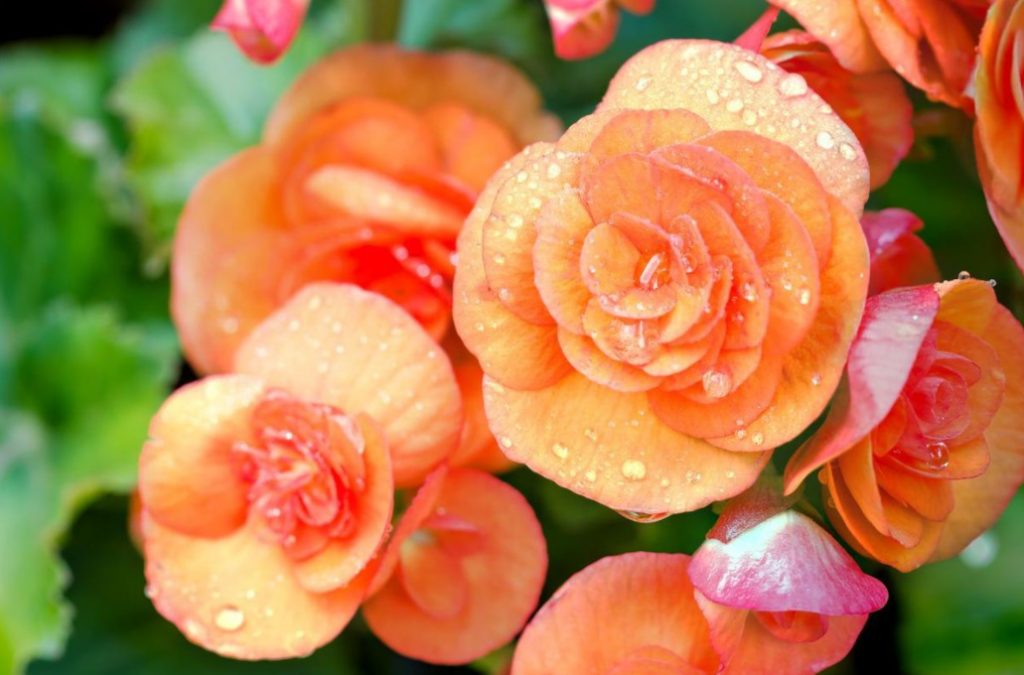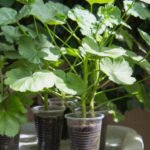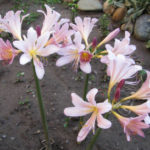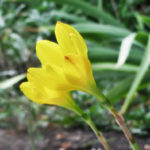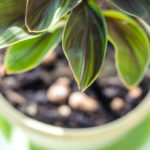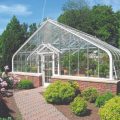A few years ago, I could not even imagine that this wonderful beauty would become a permanent decoration of my balcony in the summer. I looked with a sinking heart at the cherished tubers and every time I restrained myself from acquiring them, fearing an unsuccessful experience. But one day I still couldn’t resist – and I don’t regret it at all.
Preparation and planting of begonia tubers
I got a large, healthy tuber, but of an unknown variety. Despite the external health of the planting material, I decided not to deviate from my rules and soaked it for 15 minutes in a solution of potassium permanganate, and after two days of drying, I treated it with an immunostimulator solution according to the instructions.
I chose a small pot for planting, 2 cm larger than the diameter of the tuber. I poured a layer of expanded clay, filled it with a ready-made substrate and poured a hot solution of pink permanganate. When the soil cooled down, I made a small depression in the center and put the tuber there, sprinkling it so that half of it remained above the ground.
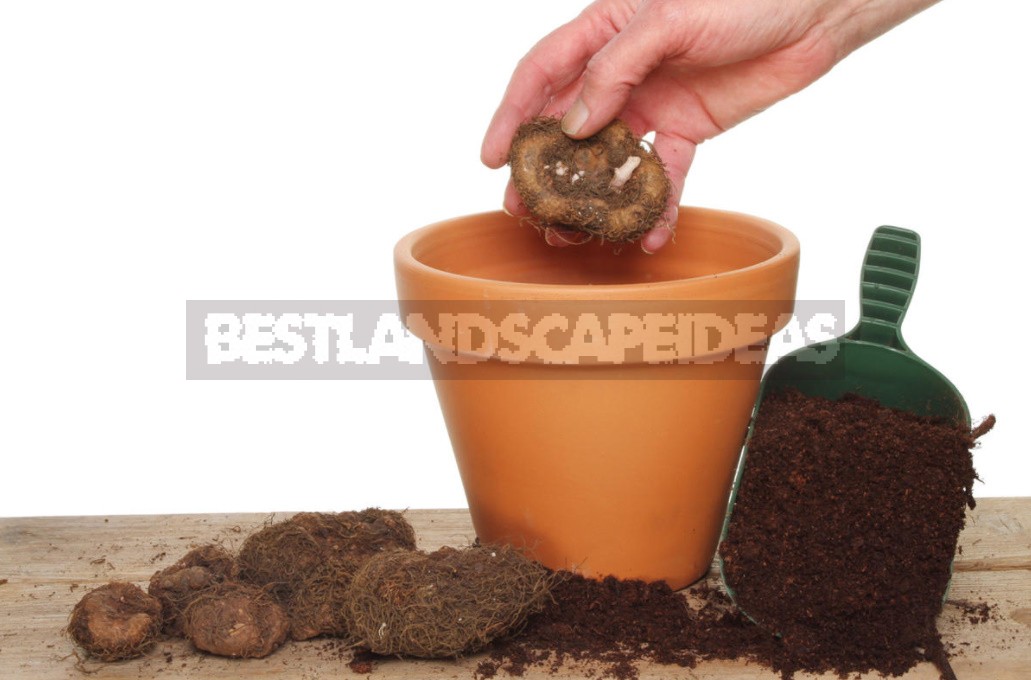
Begonia care at home
Because of the fear of rotting the tuber, I watered my begonia only after the top layer of soil had dried out. When the sprout reached 10 cm in height, I began to use fertilizer for decorative flowering plants when watering and constantly turned the pot with the flower towards the light source so that the shoot would not bend.
At the end of May, I took the pot of begonia out to the open balcony, where I chose a bright place for it, but protected from direct sunlight.
My begonia turned out to be low, and three buds in the form of pearl shells formed on strong flower stalks. And in June, the first flower bloomed. It was huge, 12 cm in diameter, bright orange color with a thin white border: not a flower, but a firebird! I have not seen such beauty in any catalog.
When three flowers bloomed at the same time, the foliage was practically not visible.
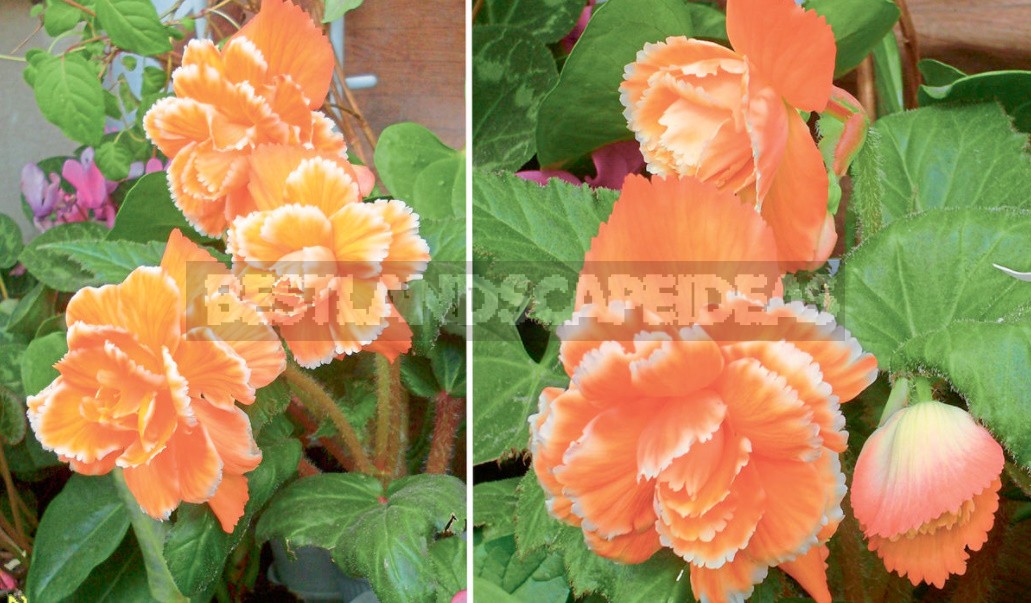
Each flower lasted for three weeks, then my beauty rested a little (during the hottest period of summer), and the second wave of flowering began. However, the flowers were a little smaller.
In the same year, but a month later, I planted two more tubers with already hatched sprouts, but they developed much slower, and the first flowering came only in August. They bloomed with beautiful double flowers of pink and scarlet color, 5-6 cm in diameter, and the bushes turned out to be much larger than the orange beauty. Their repeated flowering was less decorative, there were significantly fewer flowers, and some lost their terry. As I later learned, this is a normal phenomenon for begonias.
How to grow begonia from seeds
Having decided to master all the ways of growing tuberous begonias, I bought a package of seeds’, in which there were 10 drained seeds. I spread them out on the ground surface in a small bowl, sprinkled the seeds from a spray gun to melt the shell, covered them with a film and put them under the lamp. Soon 8 thin sprouts appeared.
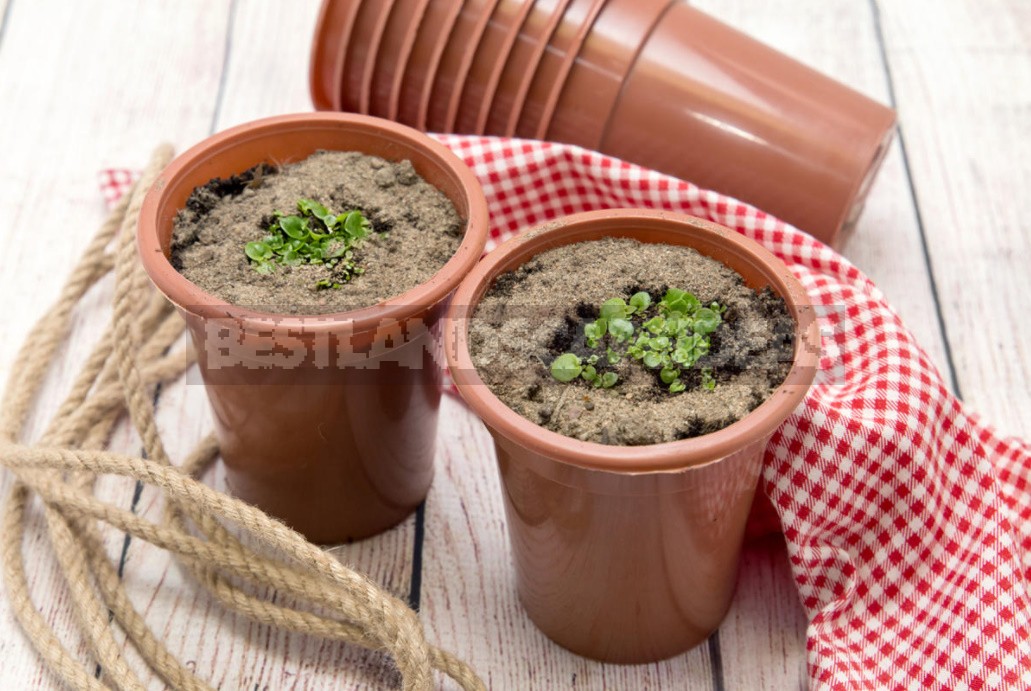
Unfortunately, I managed to save only one. As the seedling grew, I passed it twice in 5 months, and now it has bloomed.
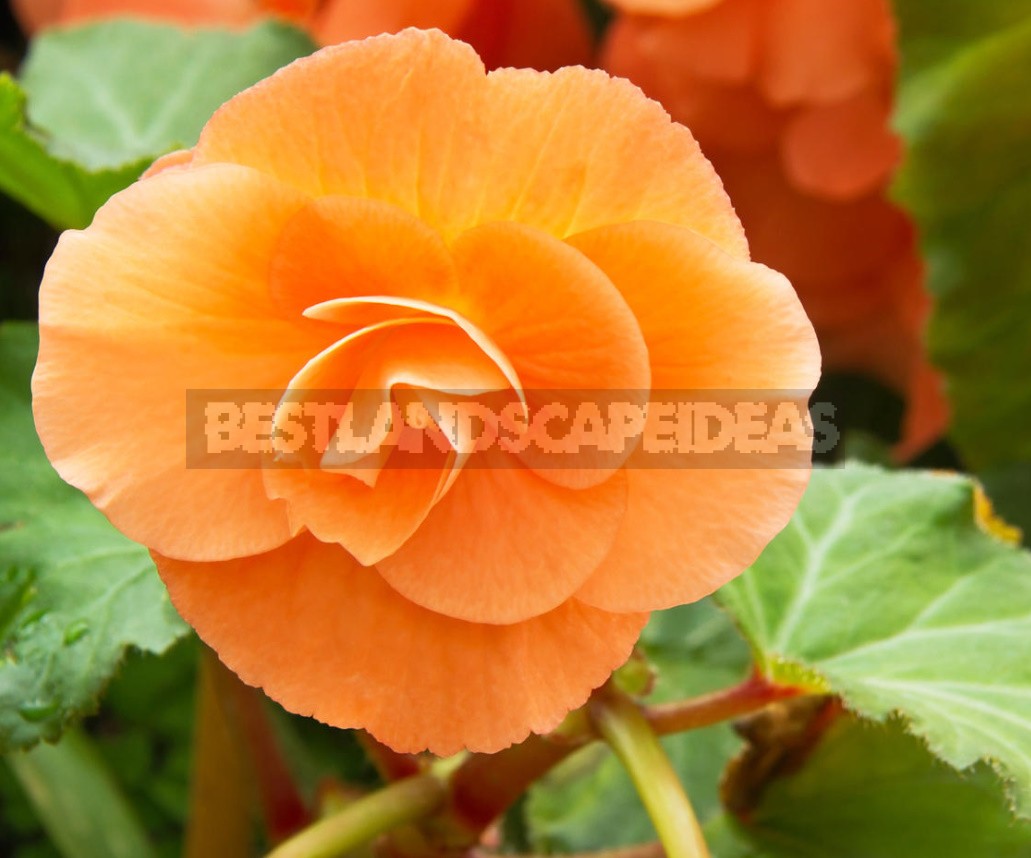
Only two flowers bloomed on a 10-centimeter bush. But the little ones were lovely-terry, salmon-like beauties.
How to save begonia in winter
Begonia grown from seeds, like gloxinia, is not sent to rest in the first winter — the tuber is too small, and the reserve of strength for a long period of rest may not be enough. So I left the baby on the window under the lamps for the whole winter. I have limited watering for adult plants since September, and then stopped watering at all. When the green mass dried out, I carefully removed all the tubers from the pots, dried them for several days in the shade and put them away for storage in a bag with dry sawdust in the refrigerator, in the vegetable storage compartment. Everyone overwintered perfectly and the next year they pleased me with the same lush flowering.
Reproduction of begonia by a leaf
I tried to grow a new plant from a leaf, like gloxinia. This process is long, but possible. During flowering, I cut off a healthy leaf and put it in a cup of boiled water. First, a callus began to form on the leaf – the germ of a nodule, then it grew roots, and then I planted the leaf in light soil. If we compare it with the cultivation of gloxinia from a leaf, we can say that begonia develops more slowly and rots much faster with the slightest waterlogging. Rotting is possible even at the stage of leaf rooting. But it is quite possible to achieve a positive result.
